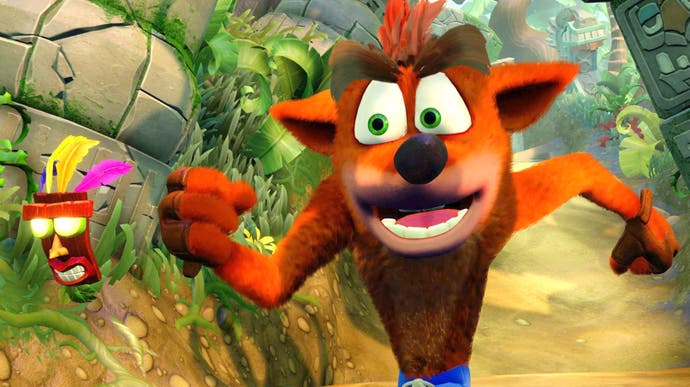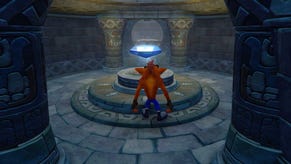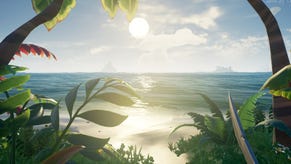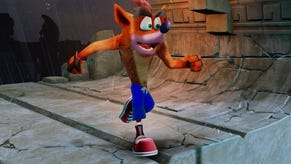Crash Bandicoot's Xbox, PC and Switch ports tested
And we look at the new PS4 patch too.
He's back - again - and seemingly more popular than ever. Crash Bandicoot's N. Sane Trilogy arrived on Xbox One, PC and Switch last week, once more racking up impressive sales. Indeed, Vicarious Visions' port to Nintendo's hybrid managed to best the week one tally of the impressive Donkey Kong Country: Tropical Freeze. Clearly, demand is high for the remastered cartoon antics of this particular Bandicoot, but how does the quality of each version stack up against the baseline template set by the existing PlayStation 4 and PS4 Pro releases?
The Xbox One side of the situation can be covered very quickly. Playing the game on the base S model offers up an experience that is virtually identical to the standard PlayStation 4 game. The visual feature set is identical and resolution is the same at 1080p, with only the most minor fluctuations in performance setting it apart from its Sony counterpart. Put simply, base Xbox users can go in safe in the knowledge that they're getting an excellent experience - and that only ramps up on Xbox One X, where Crash retains its solid 30fps performance but ramps up the pixel count to a full 4K. That's an impressive 2.25x increase over the 1440p of PS4 Pro.
But the console builds are still pegged to 30fps - one of the only real disappointments we had with this remaster - and that's where the PC version can make a difference. GTX 960 or GTX 1050 Ti-class GPU hardware delivers 1080p resolution at 60 frames per second, but what was immediately apparent on our i7 test rig was that CPU utilisation barely registers. So we undertook an experiment, lashing up a PC based on the same AMD Jaguar CPU cluster as the consoles, overclocked to the same 2.3GHz as Xbox One X. Even lacking the 2.5 extra cores available to developers and even carrying the significant burden of the full-blown Windows OS, our system could run Crash 1 and 2 almost flawlessly at 60 frames per second at ultra settings with a GTX 960 (though shadows needed to drop to high), though strange bottlenecks we couldn't explain prevented us from achieving the same thing on Crash 3.
There are a couple of takeaways here. First of all, Vicarious has delivered a lean PC port here: the options are thin on the ground (there's no facility to run the game above 60Hz and there's no ultrawide support) and most of the scalability only comes through adjusting resolution, but regardless, overall system requirements are low enough to ensure that you should get a good experience on a range of hardware. Secondly, CPU utilisation is absurdly low to the point where a 60fps option - for the enhanced consoles, at least - should be viable. Based on our tests, GPU power is the primary limiting factor, but 1080p60 should be doable for Pro and X and we hope it's something that Vicarious considers for the future.
For the PC, PS4 and Xbox One triumvirate, there's not much to add - though the release of the new console versions has seen the Sony platform updated to match. That means that you get a somewhat flat rendition of HDR support, along with a tweak to motion blur, which sees the intensity of the effect reduced a touch on the PlayStation system, bringing it into line with the new Xbox One game. By contrast, motion blur actually seems ramped up a touch by comparison on Nintendo Switch - which is possibly the most interesting version of the game.
As the story goes, a single engineer at Vicarious Visions spent his weekend getting a prototype of the first level up and running on Nintendo's hybrid, and the resulting work was enough to convince the firm to add a full Switch port to the line-up. The end result is worthwhile and creditable, but there are a range of nips and tucks to the presentation that cumulatively diminish it somewhat, while control doesn't feel as snappy as any of the other versions.
Understandably, the first cutback comes from resolution, with the game running at standard 720p while docked, dropping down to 853x480 in portable mode - a proper, non-anamorphic 480p presentation, effectively. Performance in both configurations is much the same, with a matching 30fps target to the other console builds, but there's more variation in performance more often, both above and below the 33ms target frame-time. Overall, there's more wobbliness in the update here, which is in contrast to the rock-solid performance enjoyed on every other platform.
Visual cutbacks begin with the loss of the primary fur shader, impacting the look of many of the game's critters and even Crash himself (though he seems to have received some care in revamping his textures to provide a similar look). But that's just the beginning - depth is reduced from pared-back self-shadowing parallax occlusion maps. It's used extensively in the level design, principally on rocks and it's a relatively simple trick, but it looks great and it's missed on Switch. World geometry is also simplified in some areas, foliage is reduced, shadow quality and ambient occlusion are pared back and even some reflections - implemented on the original PS1 game - are removed.
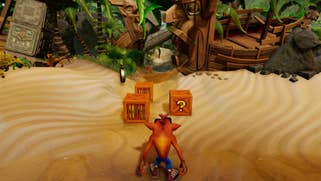


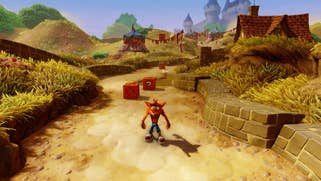

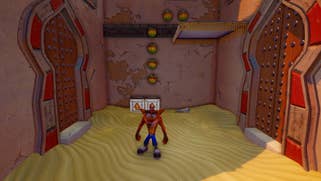
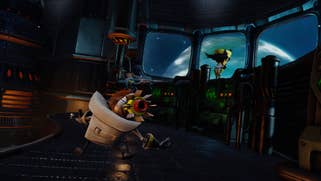
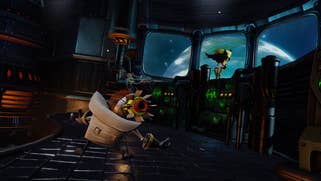
The reductions are extensive then, but the cartoon style still holds up and watching the game in motion - especially in handheld mode - is still a treat, bearing in mind the mobile chipset powering the show here. This is another case where it's just great to see a modern game (albeit a remaster) running so nicely. But it's also another example of where the cutbacks and the lower resolution ensure that running docked on a living room display falls a little short. Crash seems to employ FXAA anti-aliasing and maybe a move to TAA might have helped to clean up image quality on both modes.
However, the main issue I had with the Switch version isn't related to visual features at all and comes down to latency. It's not as scientific as I'd like, but pointing a 240fps high speed camera at the Xbox and Switch versions, it looks as if the Nintendo platform suffers from a two frame (33ms) deficit in response compared to the othhers. It's not great with the Pro controller and perhaps it's down to analogue dead zone configuration but it feels even less responsive on the Joycons. This is the primary area where I hope Vicarious can take another look at the game.
And there's certainly evidence that the developer listens to feedback. Loading times were my major issue with the original release on PlayStation 4 and Pro, taking forever to move between stages, impacting the flow of the game. This is fixed on Xbox One, with loading times so fast, it almost feels like you don't really need the loading screens. Switch is the next fastest, running a second or so faster than PS4 Pro, which Is still massively improved compared to its initial showing - we're talking about frequent 13-16 second delays reduced down to five to six seconds with the new update.
Overall, it's a very strong showing for owners of Sony and Microsoft consoles, and the PC version holds up well too. Switch takes a hit in several areas, but you can't deny that it's still a handsome game - and the ability to game on the go is a unique advantage. But it's the quality of Vicarious' remastering here that's the real winner - the N. Sane Trilogy is extremely well-crafted, honours the original design but reworks it beautifully. The visuals look fresh and modern and while gameplay can still be frustrating in spots, slight tweaks make it more palatable to the modern audience. It'll be fascinating to see if developer Toys for Bob can pull off the same level of accomplishment with the Spyro Reignited Trilogy due in a couple of months.
